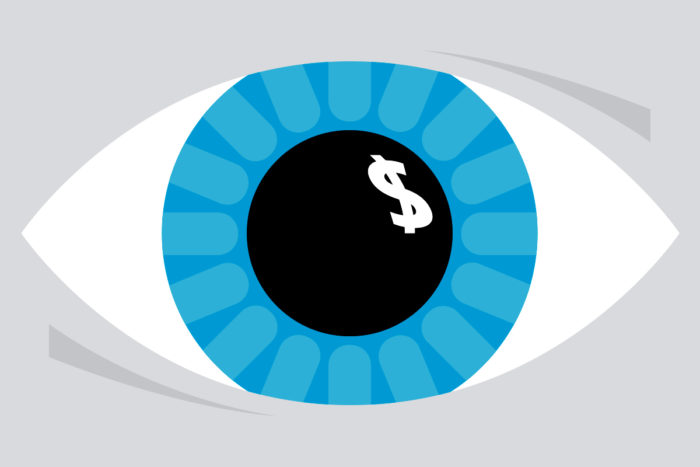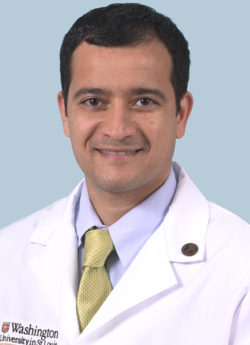Doctors paid by drug companies more likely to use those companies’ meds
Researchers analyzed data regarding ophthalmologists
 Washington University School of Medicine
Washington University School of MedicineAlthough the data can't confirm a cause and effect, researchers at Washington University School of Medicine in St. Louis have found that ophthalmologists who receive money from pharmaceutical companies are more likely to prescribe medications promoted by those companies than similar drugs that are less costly.

Ophthalmologists who receive money from pharmaceutical companies are more likely to prescribe medications promoted by those companies than similar drugs that are less costly, a new study shows.
Although the data can’t confirm a cause and effect, researchers at Washington University School of Medicine in St. Louis found a positive association between reported pharmaceutical payments and increased use of drugs prescribed to treat problems of the retina.
The study is published online in the journal JAMA Ophthalmology.
Pharmaceutical companies often pay physicians for consulting, speaking and sharing their expertise, but there are concerns that such payments may influence some doctors’ prescribing practices. In 2010, Congress passed the U.S. Physician Payments Sunshine Act, requiring pharmaceutical and medical device companies to report all payments made to physicians. The Washington University researchers analyzed data about ophthalmologists that was made available as a result of that law.
“There has been a lot of interest in the associations between industry payments and physician behavior, but the scientific data that would allow us to tease out those relationships have not been available to the extent that the information is available now,” said senior investigator Rajendra S. Apte, PhD, MD, the Paul A. Cibis Distinguished Professor of Ophthalmology & Visual Sciences at Washington University. “I’m not willing to draw conclusions about causality, but there is an association between contacts with industry and prescribing patterns.”
The researchers analyzed data from 2013, the first year it was reported under the U.S. Physician Payments Sunshine Act by the Centers for Medicare & Medicaid Services. Apte’s team focused on drugs prescribed to treat age-related macular degeneration, diabetic retinopathy and retinal vein blockages, called occlusions. The drugs are called anti-VEGF agents (anti-vascular endothelial growth factor).
“We have had an unusual situation in ophthalmology where for many years, we have had an effective drug that many doctors have used, off-label, to treat disorders of the retina,” Apte said. “More recently, two new drugs were approved by the FDA to treat the same eye problems, and those drugs have been heavily promoted by pharmaceutical companies to physicians.”
The researchers compared Medicare billing records for the three drugs. Each of the three has been demonstrated to be about equally effective in treating retinal problems. The two newer, industry-promoted drugs are ranibizumab (Lucentis) and aflibercept (Eylea). The older drug, which originally was approved to treat colorectral cancer, is bevacizumab (Avastin). Each works by inhibiting the development of blood vessels that can be harmful and inhibit vision when they grow into the retina.

Treatments with the newer drugs run more than $1,950 per dose while the cost for a dose of the older drug is about $60. The drugs are injected into the eye every couple of months.
Apte, also a professor of developmental biology, of medicine and of neuroscience, noted that some doctors may choose to prescribe the more expensive drugs because the older drug has not been FDA-approved specifically to treat retinal problems. Rather, physicians use it off-label and must get it from compounding pharmacies.
“There’s something to be said about that,” explained Apte. “With an FDA-approved drug, you know exactly where it’s been and how it’s stored. With medications that come from compounding pharmacies, there tend to be more unknowns.”
In addition, scientific and clinical thought leaders who specialize in treating certain retinal diseases often are sought as consultants by pharmaceutical companies, potentially creating a chicken-and-egg relationship between physician prescribing patterns and pharmaceutical payments.
However, it’s also possible, Apte explained, that some doctors who get money from pharmaceutical companies may be influenced to prescribe the more expensive, FDA-approved drugs.
“I think the point is that this study is only a beginning for this type of analysis, and with the Sunshine Act data, we now have ways to see how payments may affect the choices physicians make,” he said. “As we continue to analyze the data over the coming years, the relationships should become clearer, and we’ll have a better understanding of what’s going on. It’s important to remember there are numerous factors, such as state laws or individual hospital policies regarding the use of drugs from compounding pharmacies, that also may be influencing a physician’s choice of medication.”
In an accompanying editorial, Paul R. Lichter, MD, an ophthalmologist from the W.K. Kellogg Eye Center at the University of Michigan, wrote that he believes physicians who think accepting industry money will have no effect on how they prescribe medications are engaged in “mythful thinking.”
“Although it is true that acceptance of industry money or gifts … does not guarantee biased behavior, ” he wrote, “any business would be foolish to spend the billions of dollars industry dedicates year after year to marketing to physicians without being certain that it works to increase sales and profits.”
Apte’s team found that even physicians who received less than $25 from the pharmaceutical companies were more likely to prescribe the newer, promoted, FDA-approved anti-VEGF drugs ranibizumab and aflibercept.
“We found the same sort of association that some other studies looking at payments to physicians have uncovered,” Apte explained. “It may not necessarily be the dollar amount that really matters but the number of contacts between a company and a physician that’s important.”






